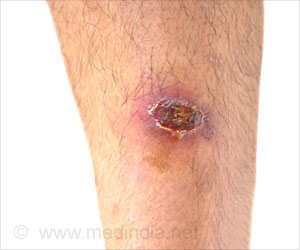Newly developed microneedle patch was found to immediately arrest bleeding and promote coagulation of blood after an injury.

‘The biocompatible and biodegradable microneedle arrays (MNAs) accelerate the clotting process. Through the process of mechanical interlocking the needles augment adhesive properties of the patch and promote wound closure.’





“In vitro, the engineered MNAs reduced clotting time from 11.5 minutes to 1.3 minutes; and in a rat liver bleeding model, they reduced bleeding by more than 90%,” Sheikhi said. “Those 10 minutes could be the difference between life and death.”
Microarray Needles for Chronic Wounds Treatment
The MNA patch can be compared with the hydrogel technology that is currently used to treat bleeding wounds in hospitals, but hydrogel applications require preparation and medical expertise. The microneedle patch is pre-engineered for immediate application that anyone can use to stop bleeding, Sheikhi said, much like a typical over-the-counter adhesive bandage.Microneedles — which are already in use to deliver biologics, such as cells or drugs, through the skin or for cosmetic procedures to stimulate collagen production — are tiny, making their application pain-free, according to Sheikhi.
The researchers are now working to translate the patch from the lab to the market, with plans to further test the technology.
All the animal experiments were carried out after the approval of animal protocol by the UCLA Animal Research Committee. Animal handling procedures were performed following the “Guide for the Care of Laboratory Animals.”
Sheikhi received financial support from the Canadian Institutes of Health Research through a postdoctoral fellowship as well as the startup fund from The Pennsylvania State University.
Advertisement
Source-Eurekalert












